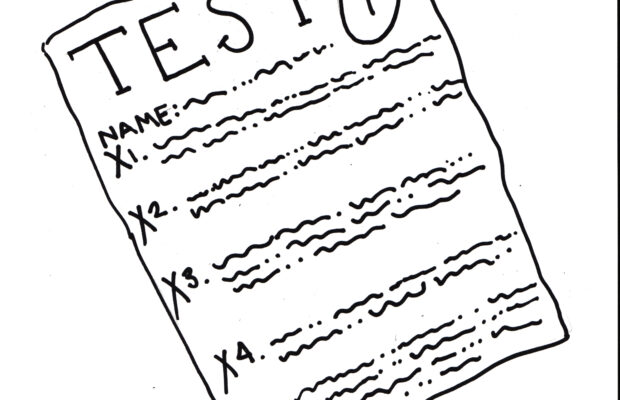Grading systems fail to support student growth

Recently more teachers are introducing different policies and no two teachers seem to follow the same exact grading practices. While it used to be a percentage based on overall points that students worried about, it has become increasingly difficult to understand how the effort you put into a class translates to your final grade. In order to alleviate that stress and confusion, we believe that choosing one unified form of grading where tests are holistically adjusted, assessments and assignments are weighted equally and revisions are mandatory would be best for students because students should know where they stand in each class and be given the time to work toward the grade they want to earn.
Since elementary school, percentages have translated to specific letter grades based on a grading scale. Experiencing the stress of constantly trying to keep a grade stable contributed to a mentality where students felt defined by the letters on their transcripts. “Straight-A” students are terrified by the thought of a “B,” the perpetually “average” students feel unmotivated to excel and the “below-average” students are made to believe they do not have the ability to become “smarter.”
A merit of the traditional letter grading system, however, is that credit is given where it is due. Theoretically, those who do the work are destined to succeed, yet it is not that simple. Every individual has their strengths and weaknesses and a unique way of learning, so grading systems should, in turn, reflect a balance between the effort a student puts in and their overall results. Although it is unrealistic for a teacher to tailor the curriculum to each of their students individually, there are ways to ensure that the students who want to succeed have the resources and the safe space to do so.
It is important to reassure students that they are not solely defined by their grades. The holistic grading system allows students to work towards meeting and exceeding the standards for that curriculum and level. By prioritizing the process of learning over the resulting scores of achievement, less pressure for immediate results is placed on the student, allowing for growth and a genuine understanding of the material. An individual and their work are assessed as a whole, whether this means allowing revisions or accepting late work.
However, leniency also enables procrastination. In some cases, assignments are not turned in at all or only turned in at a point where completion is no longer beneficial to the student’s education. Students have to do the coursework when it counts in order to properly prepare for summative assessments. We first have to be held to a certain level of responsibility before a flexible grading system becomes effective, which is achieved through the enforcement of mandatory revisions for credit.
While the redistribution of grades aims to resemble the class’s overall performance, the boundaries set can be difficult to determine, and understandably, teachers want to avoid grade inflation. However, students do not always give 100 percent of their effort for every test or quiz, so it is important to consider that if the majority of a class demonstrates an incomplete understanding of the material, it should reflect on the teacher, not the students.
To improve student work ethic, teachers should grade in a way that encourages students to not only get an “A,” but improve on their shortcomings. If we are given the opportunity to revise and learn from mistakes, the growth will benefit not only the students but also the reflection of the teachers and the school as a whole. Grades should be balanced between tests and assignments in a way that values improvement because students would feel more encouraged and comfortable with their grades. Helping students understand the standards they must reach and providing resources to gain that understanding will lead to progress. Students should intend to improve, and teachers should support their students’ growth.



